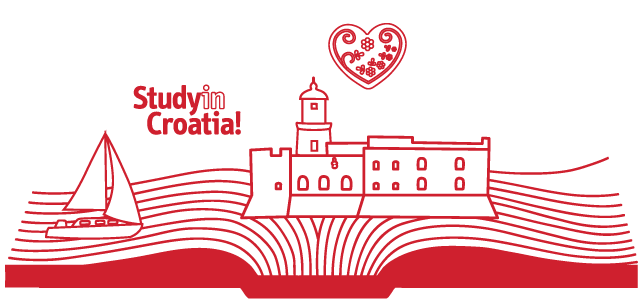The Adriatic coastline is by far Croatia’s most popular tourist region with around 11 million tourists each year. The coastline and the islands all make up a continuous Mediterranean tourist destination spanning from the smallest island village and hidden cove to a national park or urban coastal town. Crowned with 1,244 islands, islets, rocks and reefs, and characterised by cleanliness and clearness, the Croatian Adriatic can claim to be among the top sailing destinations in the world.
The chief ports of the Adriatic are Ancona, Bari, Brindisi and Venice in Italy and Dubrovnik, Rijeka and Split in Croatia and the sea is well served by regional ferries. The distance from Brindisi to Venice is 685 km (426 mi), while from Ancona to Split it is 228 km (142 mi). The sea is about 805 km (500 mi) in length, with an estimated area of 135,250 sq km (52,220 sq mi).
The unique characteristics of the seawater (crystal clear and clean) and coastline (length and indentation – approximately 1,800 km long, relatively sparsely inhabited coastline with 1,244 islands of which only 50 are inhabited) together with a mild climate, have long been recognised and used as the main comparative advantages of Croatian tourism.
The distinctly indented coastline, with an island archipelago second to none in the Mediterranean, and a host of picturesque sites boasting rich cultural and historical heritage offer the ideal preconditions for beach tourism, as well as exclusive nautical tourism.
In Croatia, the most famous tourist destinations are at the Adriatic Sea, but continental Croatia also has a number of tourist attractions, including towns with a rich history and striking architecture, castles and national parks.
The following list of regions (listed in alphabetical order) is only a selection of the possible destinations explore while in Croatia. Please visit the website of the Croatian National Tourist Board for more recommendations on regions to visit.
Dalmatia is a region of long beaches, pine woods and the ancient towns of Zadar, Šibenik, Split, Trogir, Omiš and Dubrovnik, that testify to the rich cultural and historical heritage of Croatia.
Dalmatia is also home to some of Croatia’s most beautiful islands including Korčula (the birthplace of Marco Polo), Brač (which has one of the most beautiful beaches in the Mediterranean - Zlatni rat - which is also a windsurfing paradise), Hvar, Vis, Mljet and others. Dalmatia is also known for its good wines and friendly people.
Istria is the most developed Croatian tourist region, closest and most easily accessible from Western Europe, whose landscape can be compared to that of Tuscany or Provence. Numerous peoples and cultures, from Roman times to today, have left evidence of their cultures in the architecture, wall painting and in the rich church architecture. Vineyards and picturesque little towns are scattered all over the interior of the peninsula. Some of the major coastal tourist centres are the towns of Poreč (under UNESCO protection), Pula (with its amphitheatre) and Rovinj.
Kvarner adjoining Istria, has several popular resorts, from the celebrated tourist centre Opatija to Kraljevica and Crikvenica. The area is frequented by tourists in winter as well, due to its mild climate and easy accessibility. The carnival season, from January until March, is particularly interesting. Tourists, who want to experience nature, certainly must visit the islands, with their well preserved flora and fauna. The most visited island of Kvarner is Krk, there are a number of other beautiful islands such as Cres, Lošinj and Rab.
Lika - Karlovac region. This region in the continental part of Croatia is the link between the Dalmatian coast and the central part of Croatia. Adorned by lakes, meadows, springs, streams and rivulets, magnificent hills and mountains, this area is a beautiful, calm and pleasant destination for visitors. It is in this region that the Plitvice Lakes National Park is located, as well as the National Park of Northern Velebit. (See section on Nature and National Parks http://www.studyincroatia.hr/about-croatia/tourist-destinations/nature-and-national-parks).
Slavonia. The largest urban centre of Slavonia is the city of Osijek dominated by the famous Tvrđa (Fort) as Slavonski Brod is dominated by the 18th century Baroque fortress, one of Europe’s best preserved and largest fortresses. As the largest Slavonian city and a university centre, Osijek is also a city which has produced as many as two Croatian Nobel Prize winners: Lavoslav Ružička and Vladimir Prelog. Slavonia has many castles, and horse fans can explore the famous Lipizzaner stud farm. Lipizanner horses have been bred here since 1806.
Central Croatia is a region rich in history and cultural heritage. In the Northern part of this region, the town of Varaždin is home to palaces, churches and monasteries dating back to the Baroque, Art Nouveau and Rococo periods and has one of the oldest town halls in Europe. The region of Zagorje, located in north-western Croatia, offers numerous medieval castles and fortifications, churches and archaeological sites that attract visitors. In vicinity of the town of Krapina, there is also an archaeological site where over eight hundred fossils were found belonging to Neanderthals.
Croatia's geographical position in South-Eastern Europe, combined with its natural, historical and cultural diversity, makes it an ideal location not for both national and regional explorations. Aside from making the most of your educational experience, you can even visit nearby countries such as Austria, Italy, Hungary, Slovenia, Bosnia and Herzegovina, Serbia and Montenegro, which are all easy reachable by car, bus or train.
